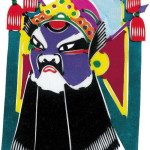Quyi is a general term for all kinds of talking and singing arts. It derived from oral literature, the talking and singing performance of ancient people. It refers primarily to storytelling accentuated by body movements to tell stories, express feelings and reflect the social conditions.
There are still about 300 types of quyi being performed in China, including comic dialogue, dagu, kuaiban, errenzhuan, tanci, shuanghuang. O these, the most popular is comic dialogue.
Comic dialogue is a kind of folk art with the “comic” dialogue as the main form of performance. It evolved on the basis of ancient folk jokes. Comic dialogue of today originated in Beijing and Tianjin over a century ago.
Comic dialogue realizes its artistic presentation by means of talking, imitating, teasing and singing .the jokes are skillfully hidden n the baofu, or “package”, a jargon used by the comic dialogue performers. When the right time comes, they are suddenly spilled out, just like the funny stuffs being tossed out of a carefully wrapped package, so unexpectedly, but logically with a second thought, causing the audiences to laugh.
Most of the comic dialogue stories come from daily life. Others are based on folk jokes, historic legends, events, and word games. The stage props is quite simple, a table, a fan, or a handkerchief will be adequate. It could be performed by one person or two, or even by a group. However, normally, a comic dialogue is performed by two people. The usual pattern is that one is a straight man that asks questions and the other gives funny answers.
The best-known comic dialogue performers are Ma Sanli, Hou Baolin, Ma Ji, Jiang Kun, etc. With the concerted efforts of performers generation after generation, comic dialogue has become a national entertainment loved by highbrows and lowbrows alike.








Leave a Reply